The electric vehicle market is evolving rapidly, with two impressive contenders making headlines: the Polestar 3 and the Tesla Model Y. Both vehicles offer cutting-edge technology, exceptional performance, and environmentally friendly credentials. In this comparison, we will delve into the technical aspects and innovations that distinguish these two electric SUVs.
Polestar 3 vs Tesla Model Y – Differences & prices compared
Two cars, one duel: Polestar 3 meets Tesla Model Y.
Which one wins in performance, efficiency and value for money? Find out now!
Design and Dimensions
The Polestar 3 showcases a bold and aerodynamic design, measuring 4900 mm in length, 1935 mm in width, and 1614 mm in height. It features a sleek silhouette that enhances both aesthetics and efficiency. In contrast, the Tesla Model Y has a more compact profile at 4751 mm long, 1921 mm wide, and 1624 mm high. This slight difference in dimensions allows the Polestar to offer a more spacious trunk capacity of 484 liters, compared to the Model Y's 363 liters.
Performance and Powertrain
Power outputs for both vehicles highlight their impressive performance capabilities. The Polestar 3 offers a range of power ratings, peaking at an astounding 517 HP and delivering a maximum torque of 910 Nm. It can accelerate from 0-100 km/h in just 4.7 seconds, providing a thrilling driving experience.
Meanwhile, the Tesla Model Y offers multiple variants, with power outputs ranging from 299 HP to an incredible 534 HP. The performance model can go from 0-100 km/h in a blistering 3.7 seconds, showcasing Tesla's typically high performance. The Model Y's torque figures also impress, peaking at 660 Nm.
Range and Efficiency
In terms of electric range, the Polestar 3 takes the lead, with a maximum range of 631 km from its 107 kWh battery. Its efficiency rating averages 19.8 kWh/100 km, demonstrating its commitment to sustainability. The Tesla Model Y, while slightly less efficient, still offers decent range options. The long-range versions can achieve up to 600 km from its 79 kWh battery, with an efficiency rating of up to 15.7 kWh/100 km.
Charging and Battery Technology
Both electric SUVs are engineered with rapid charging capabilities. The Polestar 3 supports DC fast charging, allowing drivers to charge from 10% to 80% in approximately 30 minutes at rapid charging stations. Tesla continues to lead in this area with its extensive Supercharger network, allowing Model Y drivers seamless access to fast charging, often replenishing significant battery capacity quickly.
Interior and Technology
Inside, both vehicles are packed with advanced technology and premium materials. The Polestar 3 features a minimalist Scandinavian design, equipped with a large central touchscreen that integrates seamlessly with its infotainment system, powered by Google. It also emphasizes comfort and tech with high-quality materials and ample space for passengers.
Tesla's Model Y interior is similarly modern, with its loft-like cabin and a centerpiece 15-inch touchscreen that controls most functions. The integration of Tesla's Autopilot feature elevates its tech presence, offering advanced driver-assistance systems for a more relaxed driving experience.
Safety and Assistive Technologies
Both vehicles are equipped with a suite of safety features. The Polestar 3 comes standard with advanced driver assistance systems, including adaptive cruise control, lane-keeping assist, and collision avoidance technology. Tesla’s Model Y offers similar safety technologies, with a strong emphasis on staying ahead of the game through over-the-air updates that enhance safety and performance over time.
Conclusion
In the battle between the Polestar 3 and Tesla Model Y, each electric SUV presents its own unique advantages. The Polestar 3 scores highly on range, luxury, and interior space, whereas the Tesla Model Y excels in acceleration, extensive charging infrastructure, and autonomous driving capabilities. Ultimately, the choice between these two electric vehicles will depend on individual preferences and priorities—whether that’s performance, technology, or interior space.
Here’s where it gets real: The technical differences in detail
Costs and Efficiency:
Price and efficiency are often the first things buyers look at. Here it becomes clear which model has the long-term edge – whether at the pump, the plug, or in purchase price.
Tesla Model Y has a clearly advantage in terms of price – it starts at 34300 £, while the Polestar 3 costs 67400 £. That’s a price difference of around 33085 £.
In terms of energy consumption, the advantage goes to the Tesla Model Y: with 13.10 kWh per 100 km, it’s noticeable more efficient than the Polestar 3 with 17.60 kWh. That’s a difference of about 4.50 kWh.
As for range, the Polestar 3 performs slightly better – achieving up to 706 km, about 84 km more than the Tesla Model Y.
Engine and Performance:
Under the bonnet, it becomes clear which model is tuned for sportiness and which one takes the lead when you hit the accelerator.
When it comes to engine power, the Tesla Model Y has a slightly edge – offering 627 HP compared to 517 HP. That’s roughly 110 HP more horsepower.
In acceleration from 0 to 100 km/h, the Tesla Model Y is evident quicker – completing the sprint in 3.50 s, while the Polestar 3 takes 4.70 s. That’s about 1.20 s faster.
In terms of top speed, the Tesla Model Y performs somewhat better – reaching 250 km/h, while the Polestar 3 tops out at 210 km/h. The difference is around 40 km/h.
There’s also a difference in torque: Polestar 3 pulls convincingly stronger with 910 Nm compared to 493 Nm. That’s about 417 Nm difference.
Space and Everyday Use:
Whether family car or daily driver – which one offers more room, flexibility and comfort?
Both vehicles offer seating for 5 people.
In curb weight, Tesla Model Y is distinct lighter – 1976 kg compared to 2575 kg. The difference is around 599 kg.
In terms of boot space, the Tesla Model Y offers clearly more room – 822 L compared to 484 L. That’s a difference of about 338 L.
In maximum load capacity, the Tesla Model Y performs clearly perceptible better – up to 2138 L, which is about 727 L more than the Polestar 3.
When it comes to payload, Polestar 3 hardly perceptible takes the win – 496 kg compared to 472 kg. That’s a difference of about 24 kg.
Who comes out on top?
Overall, the Tesla Model Y shows itself to be is largely superior and secures the title of DriveDuel Champion.
It convinces with the more balanced overall package and proves to be the more versatile choice for everyday use.
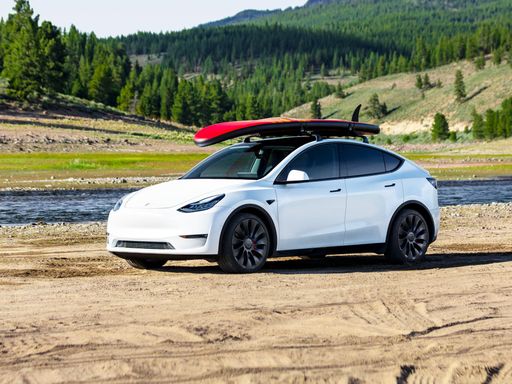 @ Tesla, Inc.
@ Tesla, Inc.
Tesla Model Y
Polestar 3
Der Polestar 3 präsentiert sich als eindrucksvolles Elektro-SUV, das skandinavisches Design mit nachhaltiger Technologie vereint. Die klare Linienführung und hochwertigen Materialien im Innenraum schaffen eine luxuriöse Atmosphäre, während das fortschrittliche Infotainmentsystem für modernste Konnektivität sorgt. Mit seinem leistungsstarken Antrieb bietet der Polestar 3 ein dynamisches Fahrerlebnis, das sowohl umweltfreundlich als auch leistungsfähig ist.
details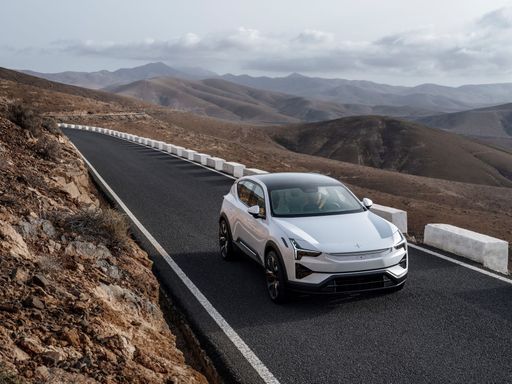 @ Polestar Automotive Holding
@ Polestar Automotive Holding
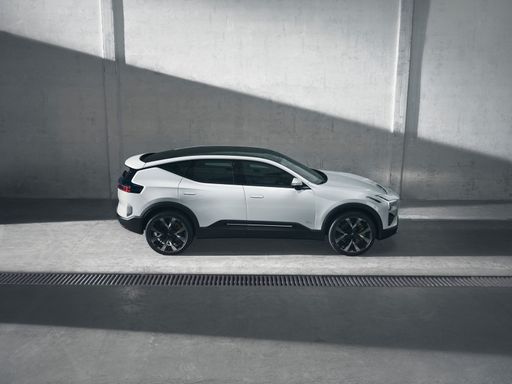 @ Polestar Automotive Holding
@ Polestar Automotive Holding
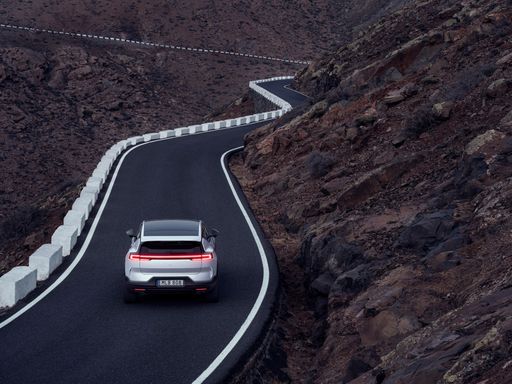 @ Polestar Automotive Holding
@ Polestar Automotive Holding
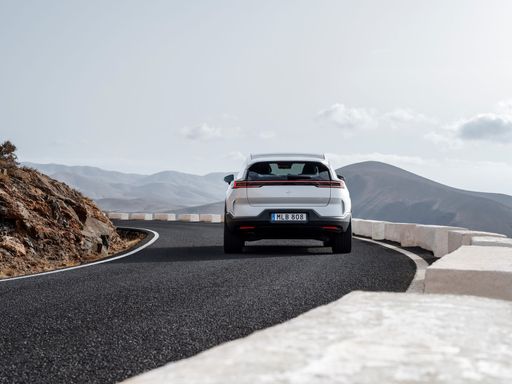 @ Polestar Automotive Holding
@ Polestar Automotive Holding
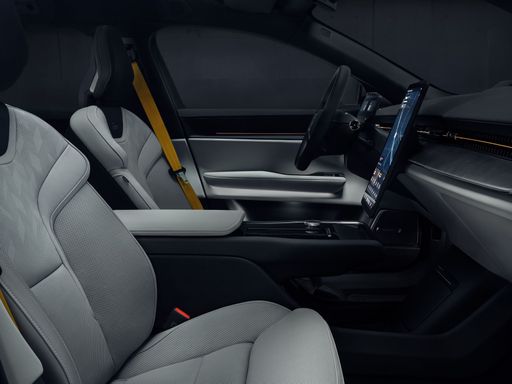 @ Polestar Automotive Holding
@ Polestar Automotive Holding
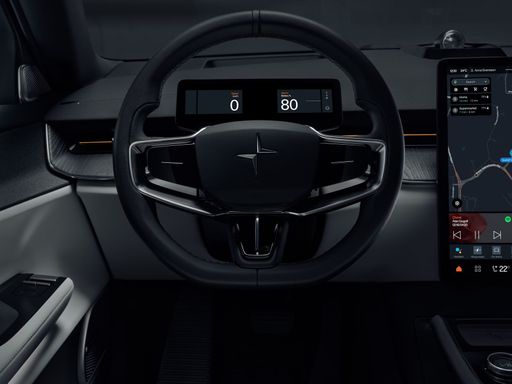 @ Polestar Automotive Holding
@ Polestar Automotive Holding
Tesla Model Y
The Tesla Model Y blends SUV practicality with sports-car poke, wrapping a roomy, minimalist cabin and handy hatch into a slick, aerodynamic package that feels more Silicon Valley gadget than garage ornament. It’s an ideal pick for buyers who want effortless electric driving, regular software improvements and access to Tesla’s convenient charging network, though style-conscious shoppers should know it’s more about tech and efficiency than classic luxury.
details @ Tesla, Inc.
@ Tesla, Inc.
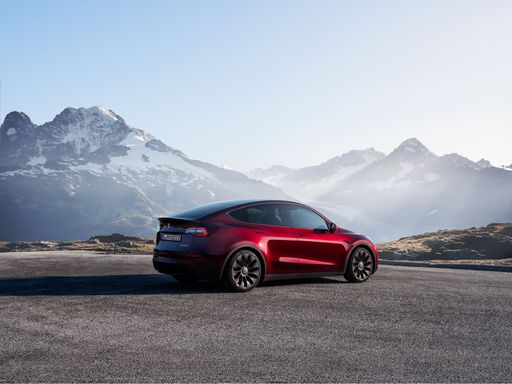 @ Tesla, Inc.
@ Tesla, Inc.
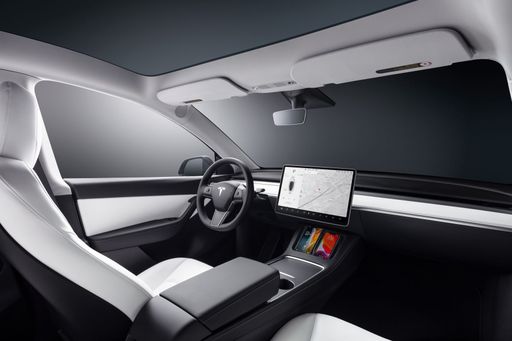 @ Tesla, Inc.
@ Tesla, Inc.
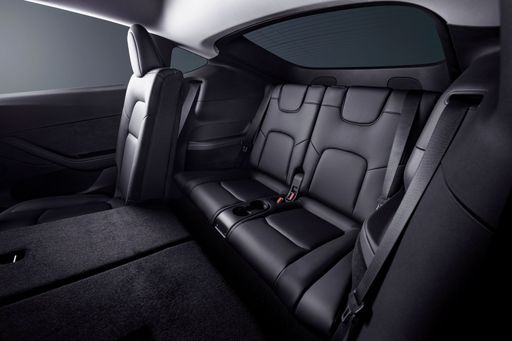 @ Tesla, Inc.
@ Tesla, Inc.
 @ Polestar Automotive Holding
@ Polestar Automotive Holding
|
 @ Tesla, Inc.
@ Tesla, Inc.
|
|
|
|
Costs and Consumption |
|
|---|---|
|
Price
67400 - 79000 £
|
Price
34300 - 53100 £
|
|
Consumption L/100km
-
|
Consumption L/100km
-
|
|
Consumption kWh/100km
17.6 - 21.9 kWh
|
Consumption kWh/100km
13.1 - 16.2 kWh
|
|
Electric Range
567 - 706 km
|
Electric Range
534 - 622 km
|
|
Battery Capacity
107 kWh
|
Battery Capacity
64.5 - 85 kWh
|
|
co2
0 g/km
|
co2
0 g/km
|
|
Fuel tank capacity
-
|
Fuel tank capacity
-
|
Dimensions and Body |
|
|---|---|
|
Body Type
SUV
|
Body Type
SUV
|
|
Seats
5
|
Seats
5
|
|
Doors
5
|
Doors
5
|
|
Curb weight
2575 - 2584 kg
|
Curb weight
1976 - 2108 kg
|
|
Trunk capacity
484 L
|
Trunk capacity
822 L
|
|
Length
4900 mm
|
Length
4790 - 4797 mm
|
|
Width
1935 mm
|
Width
1921 mm
|
|
Height
1614 - 1618 mm
|
Height
1611 - 1624 mm
|
|
Max trunk capacity
1411 L
|
Max trunk capacity
2022 - 2138 L
|
|
Payload
285 - 496 kg
|
Payload
440 - 472 kg
|
Engine and Performance |
|
|---|---|
|
Engine Type
Electric
|
Engine Type
Electric
|
|
Transmission
Automatic
|
Transmission
Automatic
|
|
Transmission Detail
Reduction Gearbox
|
Transmission Detail
Reduction Gearbox
|
|
Drive Type
All-Wheel Drive, Rear-Wheel Drive
|
Drive Type
All-Wheel Drive, Rear-Wheel Drive
|
|
Power HP
299 - 517 HP
|
Power HP
299 - 627 HP
|
|
Acceleration 0-100km/h
4.7 - 7.8 s
|
Acceleration 0-100km/h
3.5 - 7.2 s
|
|
Max Speed
180 - 210 km/h
|
Max Speed
201 - 250 km/h
|
|
Torque
490 - 910 Nm
|
Torque
420 - 493 Nm
|
|
Number of Cylinders
-
|
Number of Cylinders
-
|
|
Power kW
220 - 380 kW
|
Power kW
220 - 461 kW
|
|
Engine capacity
-
|
Engine capacity
-
|
General |
|
|---|---|
|
Model Year
2024
|
Model Year
2025
|
|
CO2 Efficiency Class
A
|
CO2 Efficiency Class
A
|
|
Brand
Polestar
|
Brand
Tesla
|
What drive types are available for the Polestar 3?
The Polestar 3 is available as All-Wheel Drive or Rear-Wheel Drive.
The prices and data displayed are estimates based on German list prices and may vary by country. This information is not legally binding.
